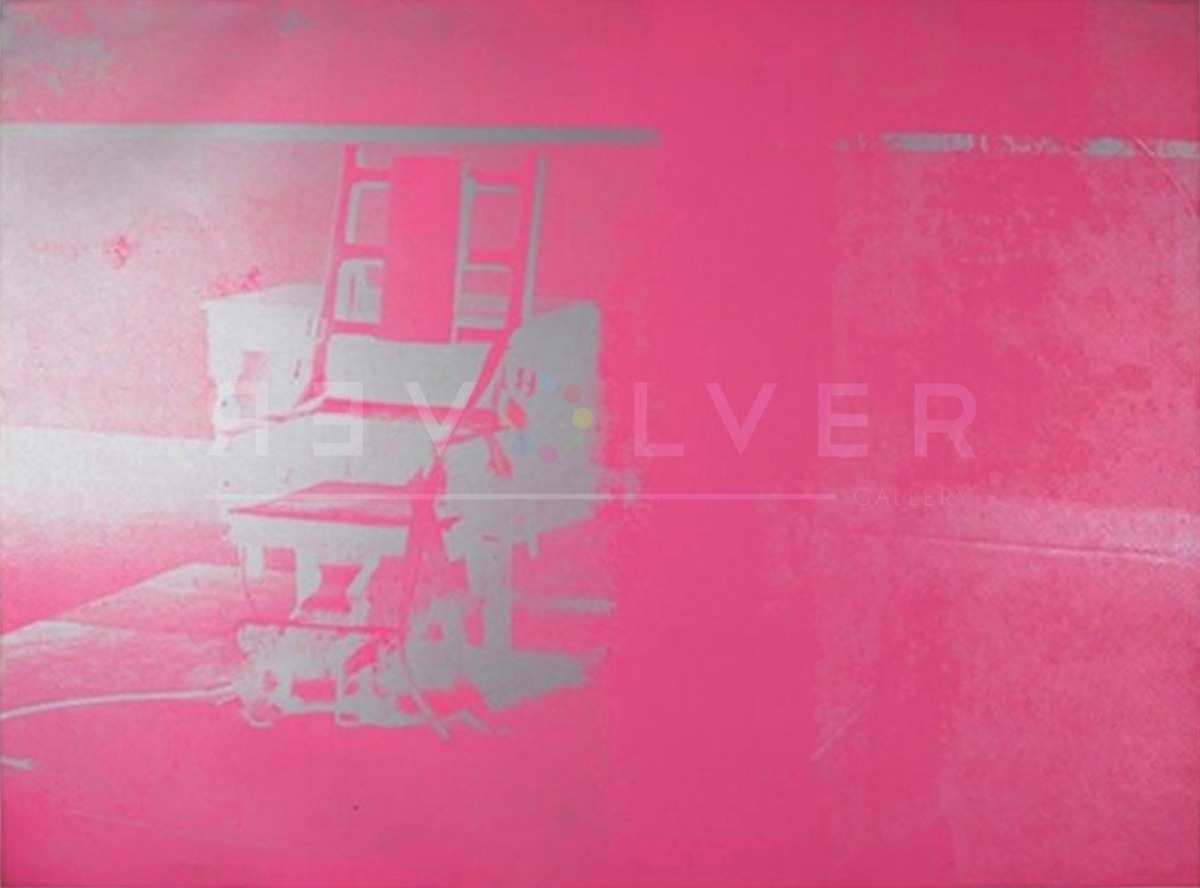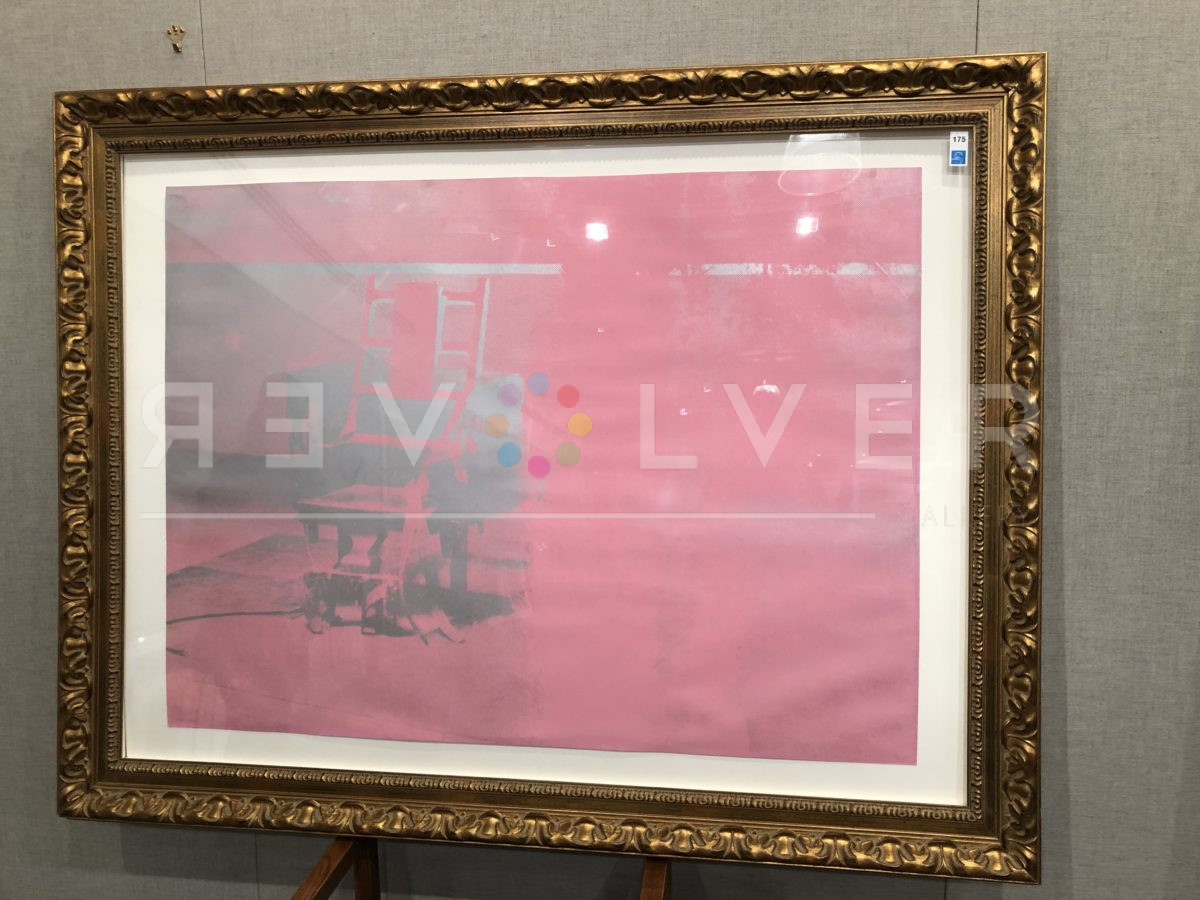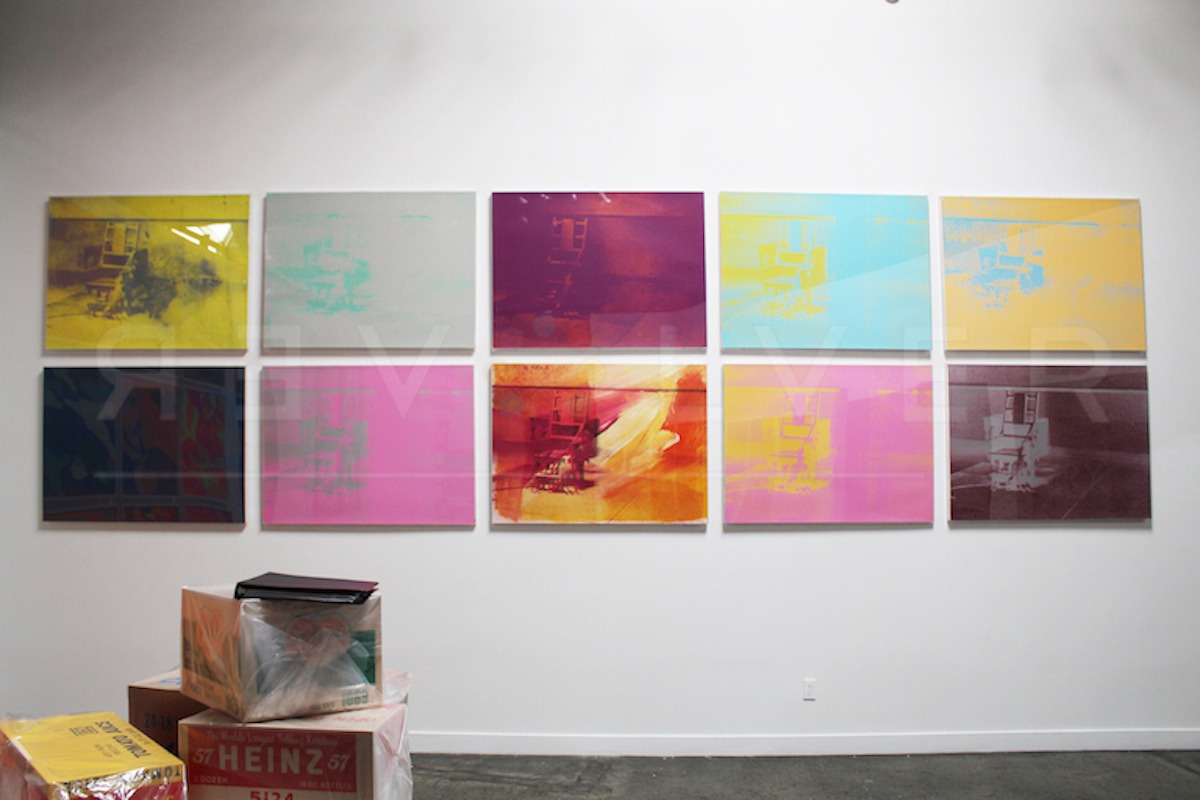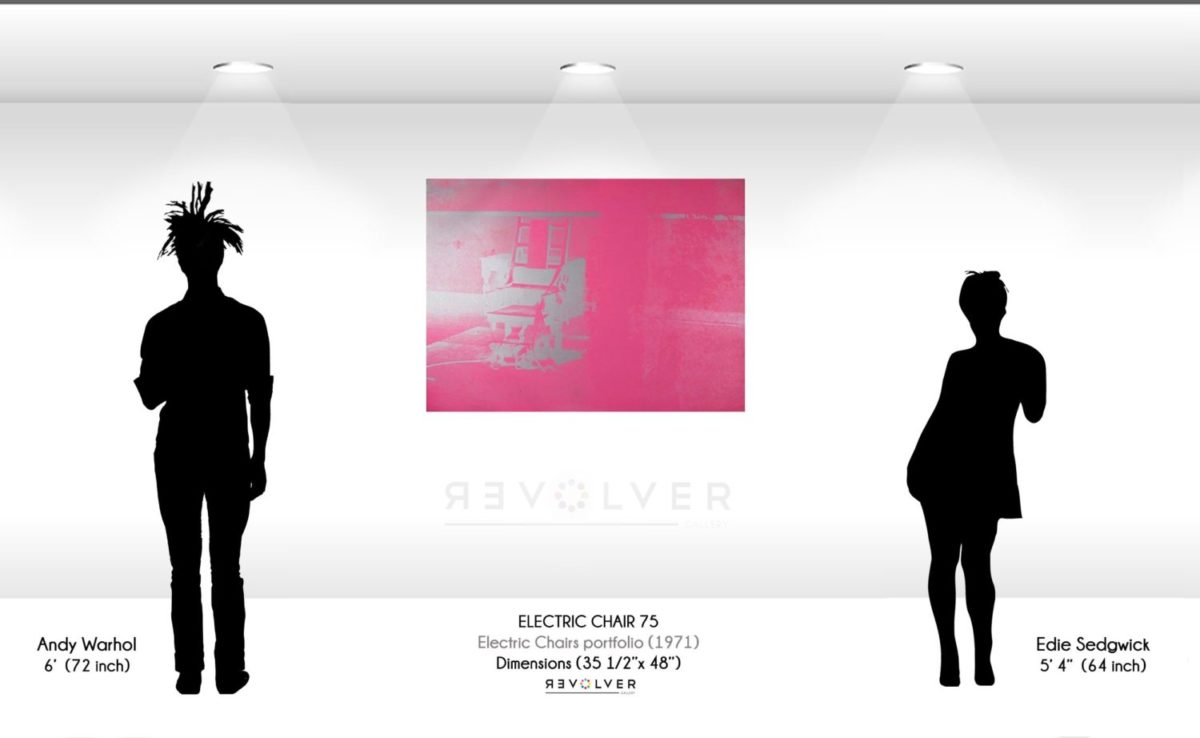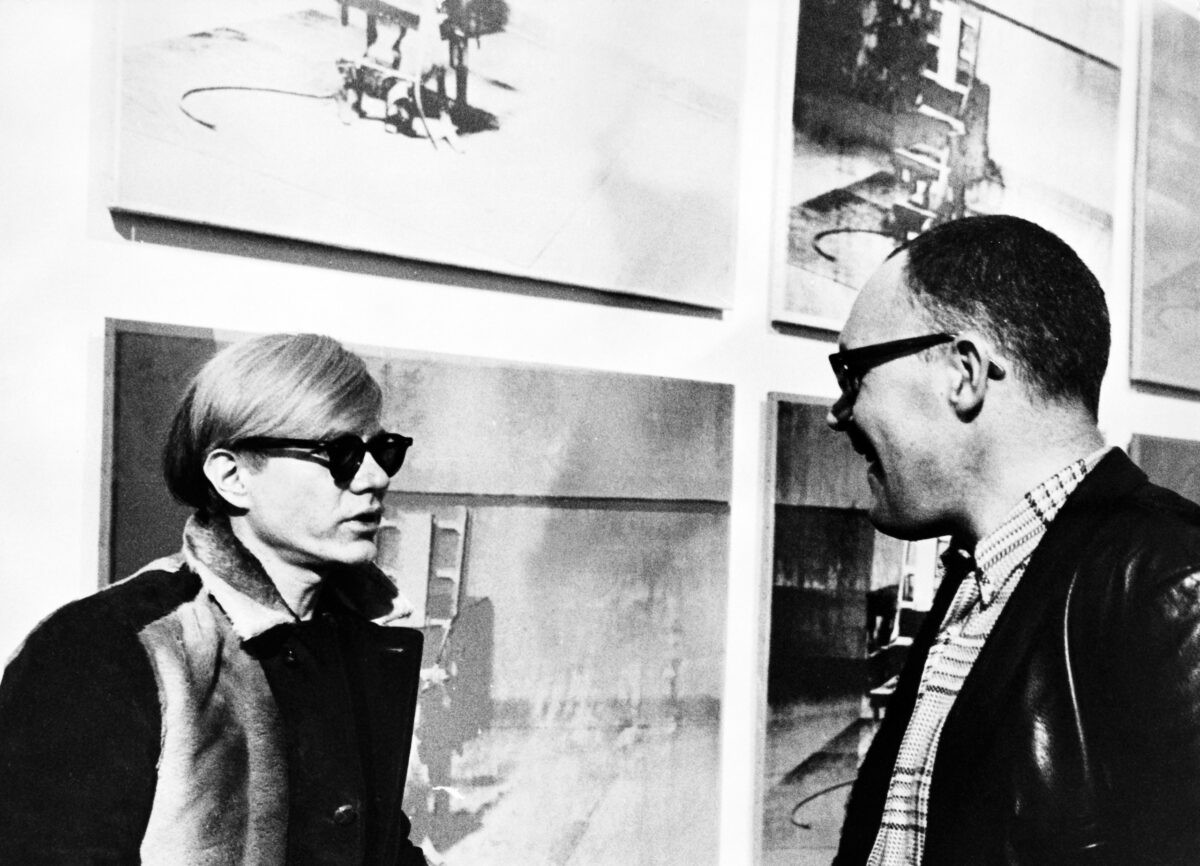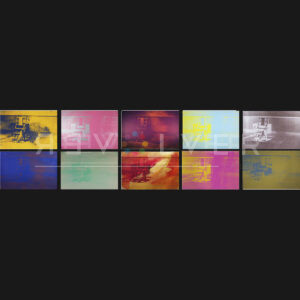Electric Chair 75 by Andy Warhol is a screenprint from the artist’s Electric Chair portfolio, published in 1971. Warhol originally painted the same electric chair multiple times in the 1960s. These images comprised a section of his infamous Death and Disaster series. Death and Disaster is a loose collection of artworks completed throughout the 1960s. It showcases various images of tragedy and violence, often appropriated from press releases and other media. In 1971, Warhol returned to the electric chair motif, publishing a ten piece portfolio to both controversy and critical acclaim. The Electric Chair series ranks amongst Warhol’s top 10 most valuable portfolios ever sold.
Electric Chair 75 has a hot pink background with the chair shown in silver. The result is paradoxical; covering a symbol of death in the bright colors of the Pop Art movement. Similarly, Electric Chair 77 emits the same haunting, yet ecstatic effect. Warhol took the image from a 1953 press release showcasing the death chamber at Sing Sing Prison in New York. In the same year that Warhol created the first electric chair image (1964), Sing Sing conducted its final two executions by electrocution. In the 1960s, there existed much uproar surrounding the death penalty, especially in New York where Warhol lived. Consequently, the electric chair images received substantial controversy.
This series, along with all the Death and Disaster images, condemns society’s numbness to the violence portrayed in the media. This is further emphasized by Warhol’s tendency to repeat the same images over and over again. Two examples from this portfolio which explore these themes include and Silver Car Crash (Double Disaster) and Green Car Crash (Burning Car I). Both of these paintings rank amongst Warhol’s highest-selling paintings of all time.
Like many of his other works, this series presents multiple duplications of the same electric chair image. This repetitive appearance reduces the power of the image, while also commenting on the media’s relentless depictions of death and violence. Warhol once said, “When you see a gruesome picture over and over again, it doesn’t really have any effect” (What is Pop Art? 60).
Warhol also found interest in the public’s reaction to the deaths of high profile individuals such as Marilyn Monroe and John F Kennedy. In his Flash portfolio, we see the same repetition of images from violent media coverage. In 1963, when Gene Swenson asked why he started his “Death” pictures, Andy replied: “I guess it was the big plane crash picture, the front page of the newspaper: 129 dies. I was also painting the Marilyns. I realized that everything I was doing must have been Death. It was Christmas or Labor Day–a holiday–and every time you turned on the radio they said something like ‘4 million are going to die.’ That started it.” Henry Geldzahler allegedly showed Warhol the newspaper headline reporting on the plane crash. From there, Warhol felt compelled to create the gruesome and profound series.
Electric Chair 75 is just one of many images through which Warhol attempt to emphasize our society’s desensitization to violence. Through these works, Warhol comments on the numbness within our society and culture surrounding these gruesome topics, while also pushing the limits of Pop Art to an uncharted extreme. Ultimately, Electric Chair 75 is one Warhol’s most provocative pieces.

